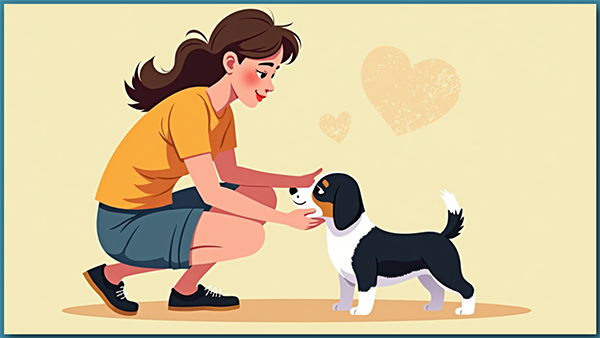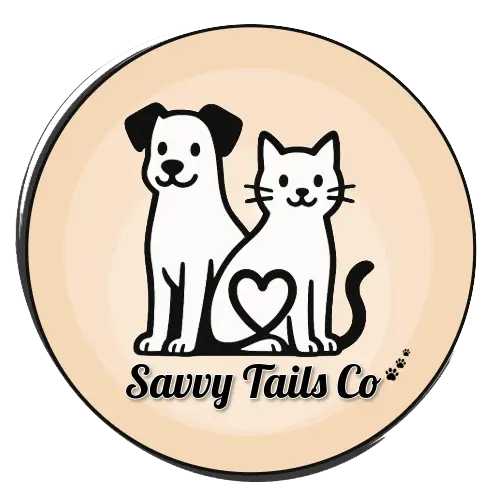
Bringing home a puppy is always an exciting ride, filled with floppy ears, wagging tails, and a fair bit of mayhem. This whirlwind phase can be easier and way more rewarding with a bit of early training. Starting simple helps you shape a confident and happy dog who knows how to fit in with your life, right from those first wobbly steps.
Puppy Training Basics: Setting Up for Success
Puppy training isn’t just about teaching tricks. It’s about helping your puppy understand how to live in your world. When you make lessons playful, short, and rewarding, your new pup picks up positive habits pretty quickly. Every dog learns at a different pace, so patience is key (and so are the treats!).
I usually start right away with house training and a healthy routine. It’s super important to keep things consistent: keep meal times and potty breaks on a schedule, and use the same words for cues every time. Puppies are always learning, so even things like calmly rewarding quiet moments or gentle play matters just as much as official “training sessions.”
Spending a few minutes each day teaching cues like “sit,” “stay,” and “come” works wonders. Little wins build up, showing your pup what you want and making them eager to join in.
How to Get Started with Puppy Training
Surviving those first days with a new puppy is easier if you have a plan. Early training routines fit best into the chaos when you focus on the important fundamentals:
- House Training: Take your puppy out often, after eating, drinking, or waking up from naps. Be patient and praise them every time things go right outside.
- Crate Training: A crate should feel like a cozy den. I like to toss treats or toys inside to make it a positive space, never a punishment spot.
- Leash Training: Begin with short walks or just letting your puppy drag a lightweight leash indoors. This helps them get comfy with being guided around.
- Basic Cues: Teach sit, down, come, and stay using tasty treats and tons of cheerful encouragement.
Quick Guide to Navigating Common Puppy Issues
Early puppyhood can bring some wild moments, but a little prep goes a long way. Here are a few common challenges and ideas for handling them:
- Nipping and Chewing: Puppies explore with their mouths. Provide safe chew toys and redirect nibbling to those. Swap out hands or shoes for rubber bones or plushies.
- Barking and Whining: These sounds usually mean your pup is bored, excited, or hurting. Make sure needs are met, including bathroom breaks, playtime, and positive training.
- Jumping Up: Ignore jumping (turn away or fold arms), and reward greeting with four paws on the floor. It’s easy to reinforce calm behavior this way.
- Potty Accidents: Accidents are part of raising a puppy. Clean up with an enzyme cleaner and keep sticking to your potty schedule.
- Fearful Reactions: Expose your puppy gently to common sounds, people, and experiences so things like the vacuum or delivery trucks become no big deal.
Staying consistent helps your puppy figure out the world and helps you avoid frustration.
Key Things to Consider Before You Start Training
Every puppy is unique, and knowing what makes yours tick helps training go smoothly. I find these points really handy to think about as you get started:
- Breed and Temperament: Some breeds pick up new cues fast, while others need a gentler touch or extra motivation. Knowing your puppy’s basic instincts (herding, retrieving, guarding) gives you a leg up in understanding what motivates or distracts them.
- Socialization: Meeting friendly dogs, gentle kids, or hearing new noises helps puppies grow up confident instead of fearful. Signing up for a reputable puppy socialization class or setting safe playdates is super useful.
- Rewards: Notice what your puppy loves. Some work for treats, some for a squeaky toy, others just want a belly rub. Using what they value makes training way more effective.
- Routine: Keeping daily schedules predictable helps your puppy learn much faster. Same meal times, nap breaks, play blocks, and training bursts help set clear expectations.
Dealing with Biting and Mouthing
Almost all puppies try to mouth or nip at hands or ankles. Redirecting them quickly to safe chews teaches what’s allowed. If they do bite too hard, a yelp or calmly pausing playtime gets the message across. Always give your pup lots of chances to do it right, since a puppy brain thrives on routine and positive boundaries.
Handling House Training Hiccups
Even with a perfect routine, accidents happen. Instead of scolding, quietly clean up and get back to the routine. Regular potty breaks, lots of praise outside, and feeding at set times all speed up progress.
Fun Socialization Ideas
Short, upbeat introductions to new sights and sounds are amazing for building your puppy’s confidence. Bring treats on walks and let them sniff around. Watch for curiosity or caution, and keep things fun and relaxed. Pairing new experiences with rewards helps prevent fear later on.
If you have neighbors, invite them over to say hi to your pup or play gentle games in the yard. Letting your puppy tag along on car rides, strolls through pet-friendly stores, or meeting up with calm adult dogs can all help open their world safely. Just remember to go at your puppy’s pace (and make sure they have had all of their vaccinations before taking them out into the world!). If they seem overwhelmed, step back and try again later. Every positive interaction is a building block for a well-socialized friend.
Building on Training: Next-Level Puppy Skills
Once your pup gets the basics, you’ll probably want to keep that momentum going. These simple tips help you raise a puppy that’s focused, happy, and loves learning:
Work on Self-Control: Teaching “leave it” or waiting politely for meals makes life easier as your puppy grows up. Practice short impulse-control exercises for a more settled dog overall.
Add Distractions: Practice cues like “sit” or “come” in lots of places, such as the park, the backyard, or inside with guests. This helps your puppy learn to focus no matter what’s going on.
Keep Sessions Fun and Short: Five minutes here and there beats a marathon session every time. Celebrate progress and keep things light, since puppies learn much better this way.
Work on handling: Gently touch your puppy’s paws, ears, and tail regularly while offering treats. This is super helpful for future vet visits and grooming.
Mixing these into daily routines ensures training is part of everyday life, not just something you do in a class or structured session. If possible, invite friends or family to help practice these new skills so your puppy gets comfortable with people beyond their core family. It adds variety and boosts confidence for your growing pup.
Puppy Training Gear: What’s Useful?
You don’t need loads of fancy stuff to get started, just a couple of basics that make sessions easier:
- Flat Collar or Harness: Choose a comfy collar or harness, and make sure it’s not too tight or too loose. Harnesses are especially helpful for tiny breeds or puppies that pull a bit.
- Leash: A simple four to six-foot leash gives you enough room to guide your puppy without letting things get out of control.
- High-Value Treats: Use soft, bite-sized treats your puppy loves. Tiny pieces let you reward more often without overfeeding.
- Interactive Toys: Kongs, puzzle balls, and tug toys keep your puppy busy and help chew away boredom.
- Crate: It’s a safe place for naps and downtime, and helps with house training. Choose a crate that’s just big enough for your puppy to stand and turn around comfortably.
Stocking up on a couple of old towels or washable blankets is a great idea, since messes are bound to happen. Having a puppy-safe gate or pen can help keep them out of trouble when you can’t supervise directly. Remember, the goal is to set your home up for success so your puppy can explore safely.
Puppy Training FAQs
Starting out with a new pup brings lots of questions. Here are a few I hear often, and what’s worked for me:
Question: How often should I train my puppy?
Answer: Short, frequent sessions—about 3-5 minutes each, a few times a day—work best. Puppies have short attention spans, so keep it fun and stop before either of you gets frustrated.
Question: What do I do if my puppy ignores me?
Answer: Try upping the value of your rewards or working in a quieter area first. Puppies sometimes get distracted, so be patient and reward focus before moving to busier spots.
Question: Can older puppies or rescue dogs learn the same way?
Answer: Absolutely! Any dog can learn new skills. It just might take a bit longer to build trust and teach new routines.
Question: When can I take my puppy to public places?
Answer: Usually, it’s best to wait until your puppy is finished with their first set of vaccinations. Ask your vet for specific advice based on your puppy’s health and age. Until then, introduce new sights and people at home or in safe environments.
Final Thoughts on Raising a Well-Behaved Puppy
Puppy training is about building a foundation for a lifetime together. It takes effort, a sense of humor, and a pocket full of treats. Celebrate the little wins, and take bumps in stride. With patience, routine, and a playful approach, you’ll set your puppy up for a confident and happy life with you. Every day brings something new to learn (for both of you!), so enjoy the adventure and keep cheering each other on. Remember: consistency, kindness, and fun make all the difference in raising your best furry friend.
Author Note: Kay has raised and trained multiple dogs over the years and shares practical, compassionate advice from personal experience. This post reflects personal guidance, not veterinary advice. If you have medical concerns about your dog, always consult your veterinarian.
Helpful Resource: Learn more about puppy development from the American Veterinary Medical Association.

